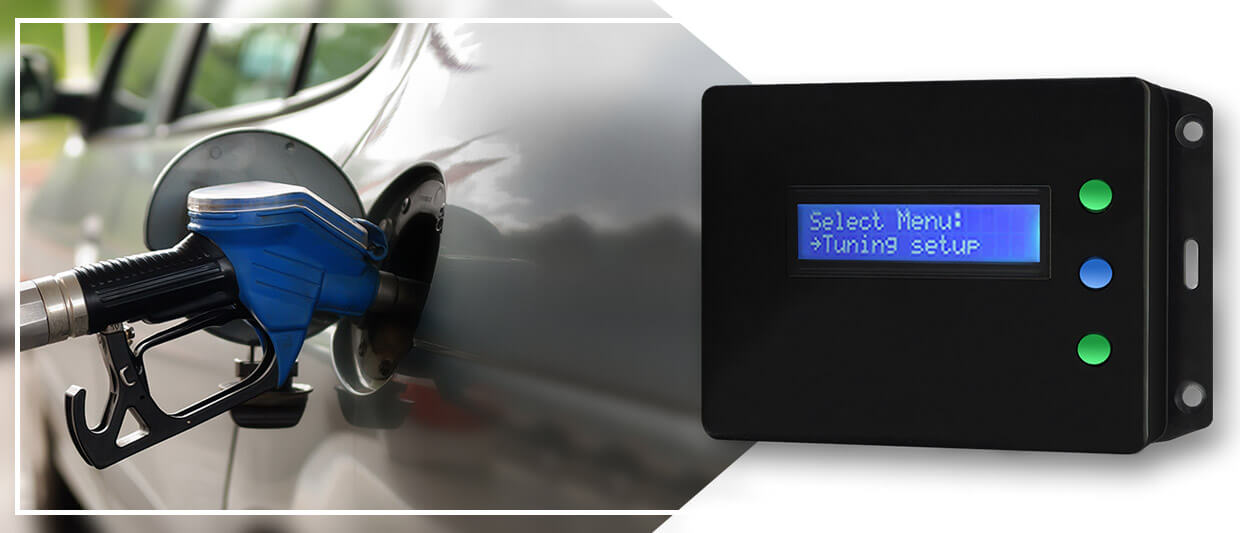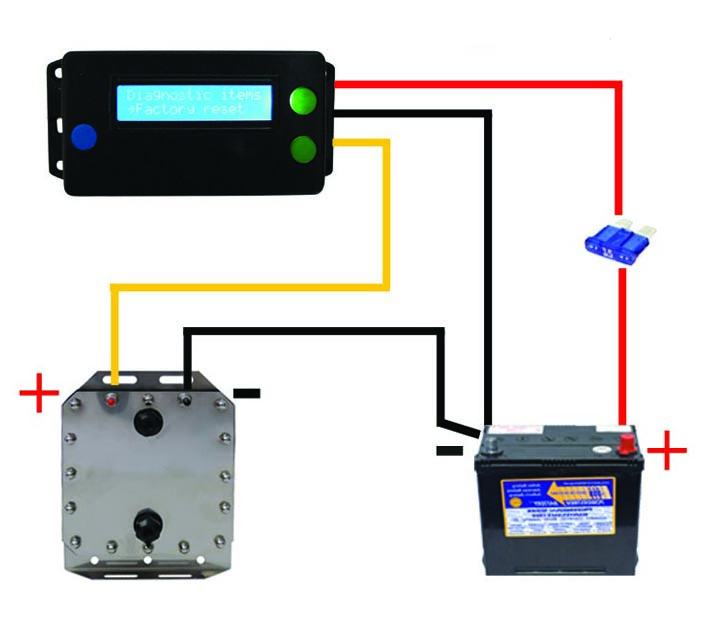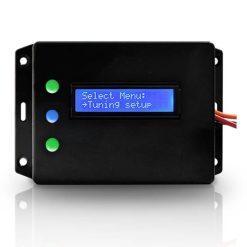No products in the cart.
Effect of hydrogen supplementation in different types of engines
Fuel injected vehicles are equipped with multiple sensors. The ECU monitors all the sensors and it is programmed to expect a certain “normal” behavior.
Hydrogen alters the combustion properties of the existing fuel. When the sensors detect this unexpected condition, the ECU responds by adding more fuel and negating the improvement in fuel economy.
If sensors are not adjusted properly, there will be more power and torque, but no fuel savings.
Carbureted engines do not have computers and there is nothing that interferes with the operation of HHO.
These installations require only a hydrogen generator and a Current Controller.
Read more: How hydrogen generators for vehicles work
ProTuner sensor and hydrogen controller
Gasoline engines consume excessive fuel, while diesel vehicles operate on an excess of air. These entirely different technologies require different approaches. Better Fuel has developed unique solutions to effectively reduce fuel consumption on both types of engines.
ProTuner is a universal fuel reduction system compatible with all types of engines.
It consists of two independent products integrated into one device:
- Fuelling system Sensor Controller
- High output Current Controller for a hydrogen generator
To meet expectations of the ECU and accommodate the altered combustion created by hydrogen, it is important to adjust and balance the sensors of the fuelling system
Better Fuel controllers are the most complete fuel optimization systems available today. A powerful microprocessor and sophisticated programming carefully enhance your fuel injection system. The result – an excellent reduction in fuel consumption while preserving the original engine performance.
These devices control all the sensors of the fueling system. Most importantly, they balance the signals of the sensors and maintain harmony within the vehicle’s computer system; which is the key to fuel savings.
How engine sensor controllers work
The computer of the car ECU monitors the Oxygen sensors in order to decide how much fuel to use at any given time.
- Oxygen sensors controller EFIE adjusts the signals coming from the oxygen sensors to make the ECU think that there is too much fuel in the engine. The ECU responds by reducing the amount of fuel sent to the system.
- MAP sensor provides the vehicle’s ECU with information about the load on the engine. In other words, how hard the driver is pressing on the accelerator pedal. The MAP controller makes the vehicle think it is always driving down a hill, therefore requiring much less fuel.
- IAT controller makes the ECU think that the air entering the engine is warmer than it really is. This results in beneficial adjustment in ignition timing and also a reduction of fuel consumed.
Read more: Better Fuel EFIE oxygen sensor controllers
Fuel saving results:
Gasoline: ProTuner + Hydrogen: 25-54%
Diesel: ProTuner + Hydrogen: 15-40%
PWM current controller for hydrogen HHO generators
A Constant Current PWM is used to control the current supplied to the hydrogen generator, the amount of hydrogen produced and the temperature of operation.
Hydrogen production is based on electrolysis which generates substantial heat. When the generator becomes hot, it consumes more electricity, which in turn causes the generator to continue getting hotter and conduct even more electricity. For example, if the current is set at 10 amps it can increase up to 15 amps when hot.
This undesirable condition is called “Thermal Runaway” that will inevitably boil the water in the system and stop hydrogen production.
To prevent this problem, every hydrogen installation requires a constant current controller to provide a fixed, stable supply of current to the generator.
Read more: Operational temperature of HHO generators
Read more: PWM hydrogen current controller explained
Read more:
How to select correct equipment
Engine carbon cleaning services vs hydrogen on demand generators
Results of NASA’ s experiments with hydrogen in internal combustion engines
Effect of Hydrogen HHO on Emissions
How to convert engines to use hydrogen as primary fuel
What happens when too much hydrogen is supplied to an engine
Buy ProTuner controller
US $500
Summary

Article Name
Engine and sensor controllers for Hydrogen HHO: EFIE, MAP, constant current PWM
Description
To meet expectations of the ECU and accommodate the altered combustion created by hydrogen, it is important to adjust and balance the sensors of the fuelling system
Better Fuel controllers are the most complete fuel optimization systems available today. A powerful microprocessor and sophisticated programming carefully enhance your fuel injection system. The result – an excellent reduction in fuel consumption while preserving the original engine performance.
These devices control all the sensors of the fueling system. Most importantly, they balance the signals of the sensors and maintain harmony within the vehicle’s computer system; which is the key to fuel savings.
Author
Better Fuel Technology
Publisher Name
Better Fuel Technology
Publisher Logo








